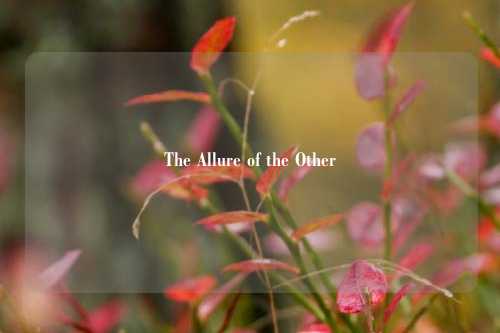In our daily lives, the term “other” is omnipresent, serving as a linguistic tool to distinguish between what is familiar and what lies beyond our immediate sphere. It is a concept that holds both objective and subjective connotations, shaping our perceptions of the world and our place within it.
Objectively, the “other” can refer to physical entities that are different from ourselves or from a particular group we identify with. In a global context, different countries, cultures, and ethnicities are often seen as the “other.” For instance, a person from Asia visiting Europe may view the European way of life, with its distinct architecture, cuisine, and social norms, as the “other.” This kind of objective “otherness” can be a source of great learning and discovery. It allows us to expand our horizons, gain new perspectives, and appreciate the rich tapestry of human diversity. We can learn about different historical events, artistic expressions, and scientific achievements that have emerged from these “other” cultures. By interacting with the “other,” we break free from the limitations of our own cultural bubble and develop a more comprehensive understanding of the world.

Subjectively, the “other” can also exist within our own minds and social circles. In a group setting, an individual with different opinions, beliefs, or behaviors may be regarded as the “other.” This subjective “otherness” can sometimes lead to conflict and division. People tend to feel more comfortable with those who share similar values and ideas, and the presence of the “other” can challenge our existing world - views. However, it is precisely this challenge that can be a catalyst for personal and social growth. When we engage with someone whose thoughts are different from ours, we are forced to re - evaluate our own positions. We may discover flaws in our reasoning or gain new insights that we would never have considered otherwise.
In the realm of personal development, the “other” can be a mirror that reflects our own shortcomings and potential for growth. For example, if we are overly self - centered, interacting with someone who is extremely altruistic can make us aware of our own lack of concern for others. This realization can prompt us to change our behavior and become more empathetic and giving individuals.
Moreover, the concept of the “other” is not static. As we learn and grow, our perception of what is “other” can change. What was once unfamiliar and intimidating may become familiar and even cherished. We begin to see the commonalities that underlie our differences and recognize that the “other” is not so different from ourselves after all.
In conclusion, the “other” is not something to be feared or rejected. It is a valuable part of our existence that offers opportunities for learning, growth, and connection. By embracing the “other,” we open ourselves up to a world of possibilities and enrich our lives in ways we could never have imagined. We should strive to break down the barriers that separate us from the “other” and build bridges of understanding and cooperation, creating a more inclusive and harmonious global community.





